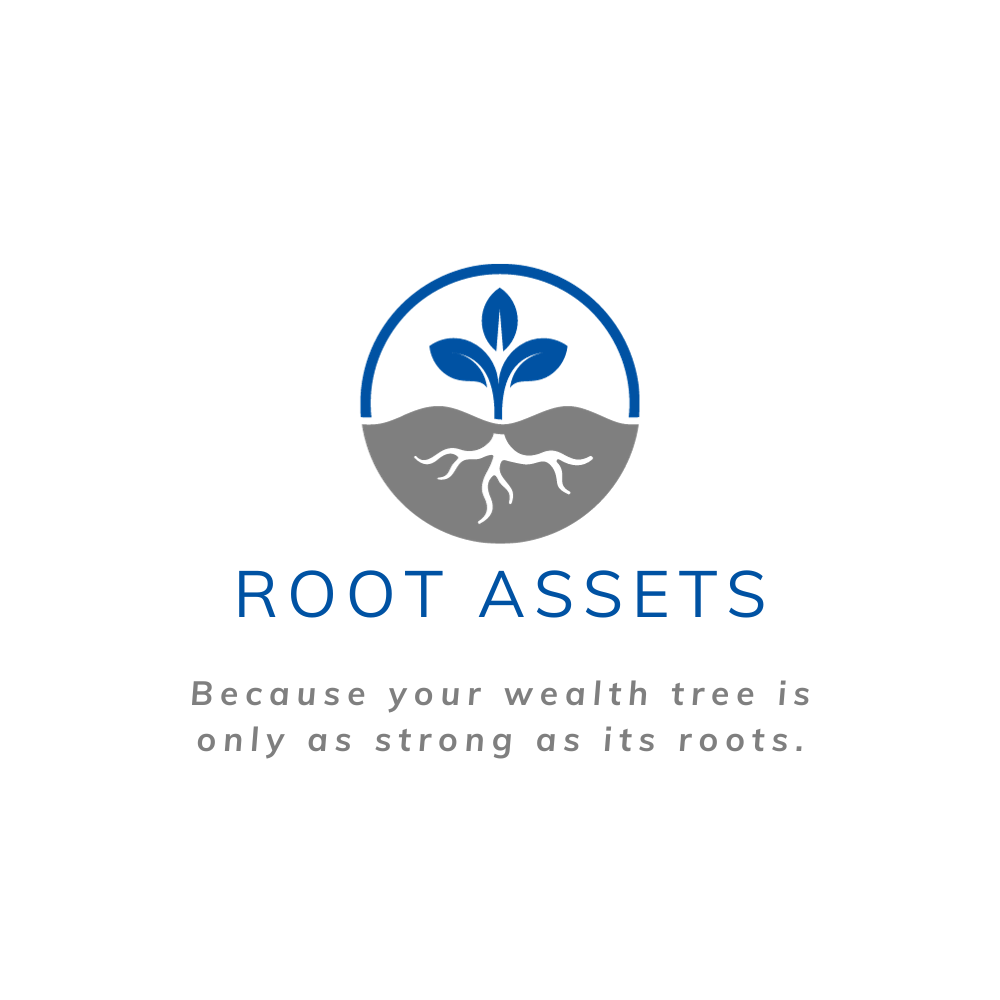
Learn more about personal and business finance by reading any one of our insightful blogs.

The Hidden Value of a Nickel: Unlocking Asymmetrical Wealth with Life Insurance and Annuities
The Hidden Value of a Nickel: Unlocking Asymmetrical Wealth with Life Insurance and Annuities
As of 7:00 AM PDT on Wednesday, July 16, 2025, the financial landscape continues to evolve, yet the timeless principles of asymmetrical investments remain as relevant as ever. In a world where market volatility and economic uncertainty persist, understanding these principles is more crucial than ever for building a secure financial future.
At first glance, a U.S. nickel is just a five-cent coin—hardly worth a second thought. But dig deeper, and you’ll find its metal content, primarily copper and nickel, is worth more than its face value, often around 7-9 cents. This makes the nickel an asymmetrical investment—a small but powerful example where the potential upside outweighs the downside risk, even if you can’t melt it down to cash in. This concept mirrors certain financial tools that appear unremarkable on the surface but reveal extraordinary value when examined closely.
In this post, we’ll explore how life insurance and annuities embody this asymmetrical nature, much like the nickel. We’ll dive deep into the cash value component of life insurance, particularly when structured by an Infinite Banking Concept (IBC) practitioner, which can lead to cash value accumulation exceeding premiums paid within just 5-7 years—essentially making the policy “free.” We’ll also highlight why these tools should be the cornerstone of any financial plan due to their consistent growth, tax advantages, and unmatched versatility.
The Nickel: A Lesson in Hidden Value
A nickel’s face value is a mere 5 cents, but its intrinsic worth—tied to the copper and nickel it contains—exceeds that. This gap between surface and underlying value is the essence of an asymmetrical investment: limited downside with significant upside potential. While you can’t legally extract the metal, the nickel illustrates a key principle: some investments hide their true worth until you look closer.
Life insurance and annuities are prime examples of this in the financial world. They may seem like straightforward tools—protection for your family or guaranteed income—but their hidden benefits, like the nickel’s metal content, make them powerful wealth-building vehicles.
Asymmetrical Investments: Big Rewards, Limited Risk
An asymmetrical investment offers outsized returns relative to the risk or cost involved. The nickel’s metal value exceeds its face value, creating a small but real upside. In finance, life insurance and annuities operate on a similar principle: you commit to a relatively modest cost (premiums or a lump sum), but the potential benefits—protection, growth, and flexibility—far outweigh that initial outlay.
Life Insurance: The Power of Cash Value and Tax-Free Growth
Whole life insurance or universal life insurance, when structured properly, is more than just a death benefit. These policies include a cash value component—a savings account that grows over time through interest and dividends, all accumulating tax-free. This is where the asymmetry shines, especially when designed by an IBC practitioner following the Infinite Banking Concept, a strategy pioneered by Nelson Nash to maximize the policy’s wealth-building potential.
How Cash Value Works
When you pay premiums on a whole life policy, a portion goes toward the death benefit and insurance costs, while the rest builds cash value. This cash value earns:
- Guaranteed interest: Typically 2-5% annually, depending on the policy and insurer.
- Dividends: Paid by mutual insurance companies like Lafayette Life Insurance Company or Mutual Trust Life, these are essentially a share of the insurer’s profits, often adding 5-7% to the growth rate, reflecting the rates offered by carriers geared toward IBC strategies. Carriers used by IBC practitioners are typically carriers that have been in business for over 100 years, has been profitable(paid dividends to policy holders) each and every year that they have been in business.They are mutual insurance carriers so that 100% of dividends come back to policyholders rather than watered down dividends from a stock insurance carrier who must pay shareholders first.
Both interest and dividends grow tax-free within the policy, meaning your money compounds without the drag of annual taxes. You can access this cash value during your lifetime via policy loans or withdrawals, often tax-free or at low cost, without disrupting the policy’s growth or death benefit.
The IBC Advantage: A “Free” Policy in 5-7 Years
When structured by a skilled IBC practitioner, a whole life policy can be optimized to front-load cash value growth, prioritizing savings over insurance costs. This is achieved through strategies like:
- Paid-Up Additions (PUAs): Extra premium payments that boost cash value immediately, often with higher returns than standard premiums.
- High cash value design: Minimizing the death benefit relative to premiums to allocate more funds to the cash value component.
Here’s the game-changer: with an IBC-optimized policy, the cash value can exceed the total premiums paid within 5-7 years. For example, if you pay $10,000 annually into a policy, the cash value might reach $50,000-$70,000 by year 5-7, surpassing the $50,000-$70,000 in premiums you’ve paid. At this point, the policy becomes “self-sustaining” or essentially “free” because:
- The cash value continues to grow, fueled by interest and dividends.
- You can potentially stop paying premiums by using the policy’s dividends or cash value to cover future costs, a feature known as a reduced paid-up policy or leveraging dividends to sustain the policy.
- You can borrow against the cash value for investments, emergencies, or opportunities while the policy continues to grow.
This asymmetry is striking: your downside is the premiums paid, but the upside includes a growing, tax-free asset, a death benefit worth multiples of your premiums, and the flexibility to use the cash value as a personal “bank.” It’s like the nickel’s metal value—hidden but far more valuable than its face.
Real-World Example
Imagine a 40-year-old investing $15,000 annually in an IBC-optimized whole life policy. By year 6, their cash value might reach $90,000-$100,000, exceeding the $90,000 in premiums paid. They could stop paying premiums, let the policy sustain itself, and still have access to a growing cash value for life—plus a death benefit of $500,000 or more for their heirs. The tax-free growth and loan feature make this a powerful tool for wealth-building, far beyond the “cost” of premiums.
Immediate Protection: Death Benefit from Day One
One of the standout features of life insurance is that the death benefit starts on day one. Unlike qualified plans—such as 401(k)s or IRAs—that must mature over time to build significant value, a life insurance policy offers immediate financial security. In the event that someone were to meet an early demise, their spouse and family would receive the full death benefit, often worth multiples of the premiums paid. This tax-free payout ensures that their financial goals for retirement funds are already met in a tax-free environment, providing peace of mind and protection that no other financial tool can replicate from the moment the policy is active.
Annuities: Guaranteed Income with Asymmetrical Upside
Annuities are another asymmetrical powerhouse. By investing a lump sum or series of payments with an insurance company, you secure a guaranteed income stream, often for life. On the surface, it’s a trade: your money for future payments. But the upside becomes clear when you consider longevity and market protection.
- Downside: You commit capital upfront.
- Upside: You receive guaranteed payments, potentially for decades. If you live longer than expected, the payouts can far exceed your investment. Some annuities, like indexed or variable annuities, offer market-linked growth with downside protection, amplifying the asymmetry.
For example, a $100,000 fixed annuity might pay $6,000 annually for life starting at age 65. If you live to 85, you’ve received $120,000—already more than your investment. If you live to 95, that’s $180,000, nearly double your initial outlay, with no risk of outliving the income. It’s the nickel’s hidden value on a grand scale.
Why Life Insurance and Annuities Are Cornerstones
Life insurance and annuities aren’t just nice-to-haves—they’re the bedrock of a financial plan for three reasons:
1. Consistent Growth: Cash value in life insurance and annuity payments grow steadily, insulated from market volatility. A 2023 report from the Insured Retirement Institute found that 78% of retirees with guaranteed income felt financially secure, compared to just 39% without it.
2. Versatility: Life insurance cash value can fund education, real estate, or retirement, while annuities can be customized for immediate income, deferred growth, or legacy planning.
3. Stability: Like the nickel’s metal core, these tools provide a reliable foundation. The tax-free growth of life insurance and the guaranteed income of annuities ensure financial security, no matter what life brings.
Look Beyond the Surface
As of July 16, 2025, the principles of asymmetrical investments like life insurance and annuities remain as powerful as ever. The next time you hold a nickel, remember its lesson: value often lies beneath the surface. Life insurance, especially when structured by an IBC practitioner, can become a “free” asset within 5-7 years, with cash value surpassing premiums and offering tax-free growth and flexibility. Annuities, meanwhile, provide a safety net that grows more valuable the longer you live. Together, these asymmetrical investments offer stability, growth, and peace of mind—making them the unsung heroes of any financial plan.
Don’t chase the shiny distractions of speculative investments. Instead, build your wealth on the quiet strength of life insurance and annuities—the “nickels” that prove far more valuable than they seem.

